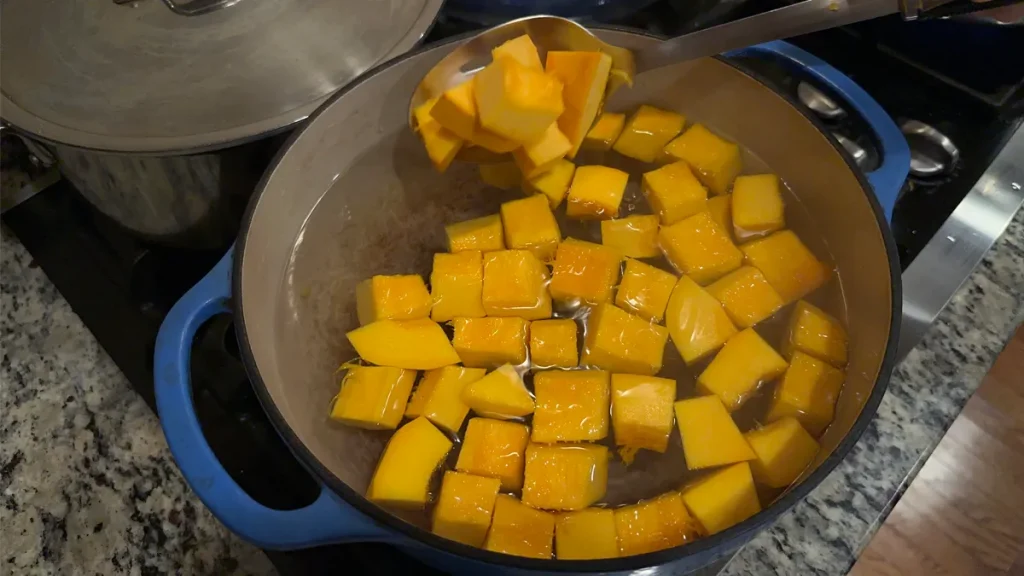Food preservation is a valuable skill that ensures you can enjoy seasonal fruits and vegetables all year round. One essential technique in food preservation is blanching, especially when preparing produce for freezing. We’ll explore what blanching is, why it’s crucial, and provide a step-by-step guide to blanching your fruits and vegetables to maintain their quality and nutritional value.
What is Blanching?
Blanching is a process where fruits and vegetables are briefly boiled or steamed and then rapidly cooled in ice water. This method helps inactivate enzymes that can cause loss of flavor, color, and texture during storage. By stopping enzyme activity, blanching preserves the quality and extends the shelf life of your frozen produce.
Benefits of Blanching Before Freezing
Blanching offers several benefits that enhance the preservation process:
- Maintains Nutritional Value: Blanching helps retain vitamins and minerals that can degrade over time.
- Enhances Color and Texture: It prevents the dulling of colors and keeps produce crisp and fresh.
- Prevents Spoilage: By inactivating enzymes and killing bacteria, blanching extends the shelf life of your produce.
- Improves Flavor: It helps in maintaining the natural flavors of fruits and vegetables.
How to Blanch Fruits and Vegetables
1. Preparation
- Choosing the Right Produce: Select fresh, high-quality fruits and vegetables. Overripe or damaged produce may not preserve well.
- Cleaning and Cutting: Thoroughly wash produce to remove dirt and pesticides. Cut into uniform sizes for even blanching.
2. Blanching Process
Boiling Method:
- Fill a large pot with water and bring it to a rolling boil.
- Submerge the prepared produce in the boiling water. Use a blanching time chart to determine the correct time for each type of produce.
- Once the time is up, immediately transfer the produce to an ice water bath to stop the cooking process.

Steam Blanching Method:
- Use a steam basket placed over boiling water.
- Place the produce in the basket, cover, and steam for the recommended time.
- Transfer immediately to an ice water bath.
3. Cooling and Drying
- Rapid Cooling: Use an ice water bath to quickly cool the blanched produce. This step is crucial to halt the cooking process and preserve texture.
- Drying Techniques: After cooling, drain and dry the produce thoroughly to prevent ice crystals from forming during freezing.
4. Freezing
- Tray Freezing: Spread vegetables in a single layer on shallow trays or pans. Place in the freezer just long enough to freeze firm. After the first hour, check often. Long exposure will result in loss of moisture. Package quickly, leaving no headspace, then seal. Tray packaged vegetables remain loose and can be poured from the container and the package re-closed.
- Proper Dry Packaging: Use airtight containers or freezer bags. Remove as much air as possible to prevent freezer burn. Leave 1/2 inch headspace from the top of the container.
- Labeling: Clearly label each package with the type of produce and the date of freezing.
- Storage Tips: Store at a consistent temperature of 0°F (-18°C) or lower. For best quality, use within the recommended time frame, usually 8-12 months.
Common Mistakes to Avoid
- Over-blanching or Under-blanching: Follow the recommended times closely. Over-blanching can cause loss of flavor and nutrients while under-blanching can fail to inactivate enzymes.
- Improper Cooling: Ensure that the produce is cooled rapidly to prevent continued cooking.
- Not Drying Thoroughly: Excess moisture can lead to ice crystal formation, affecting texture.
- Inadequate Packaging: Use proper containers to avoid freezer burn and ensure long-term preservation.
Blanching FAQs
Can you freeze without blanching? Yes, but blanching improves quality and shelf life by preserving color, texture, and flavor.
How do you tell if blanching was done correctly? Properly blanched produce will maintain vibrant color and firm texture. If it’s too soft or discolored, adjust the blanching time.
How long can blanched vegetables be stored? When properly packaged and stored at 0°F (-18°C) or lower, blanched vegetables can last 8-12 months.
Blanching is a simple yet effective step in the freezing process that preserves the quality of your fruits and vegetables. By following the steps and tips outlined above, you can ensure your produce remains nutritious and delicious for months to come.